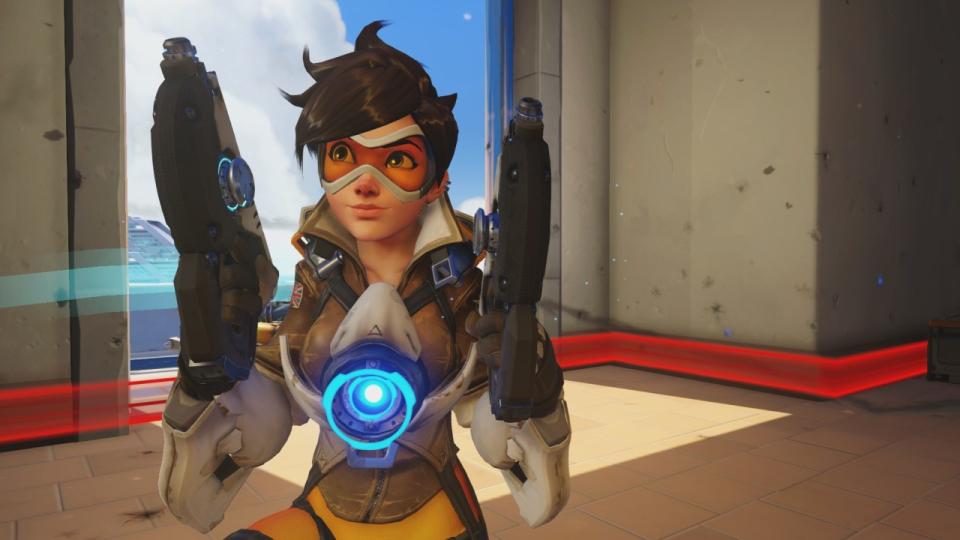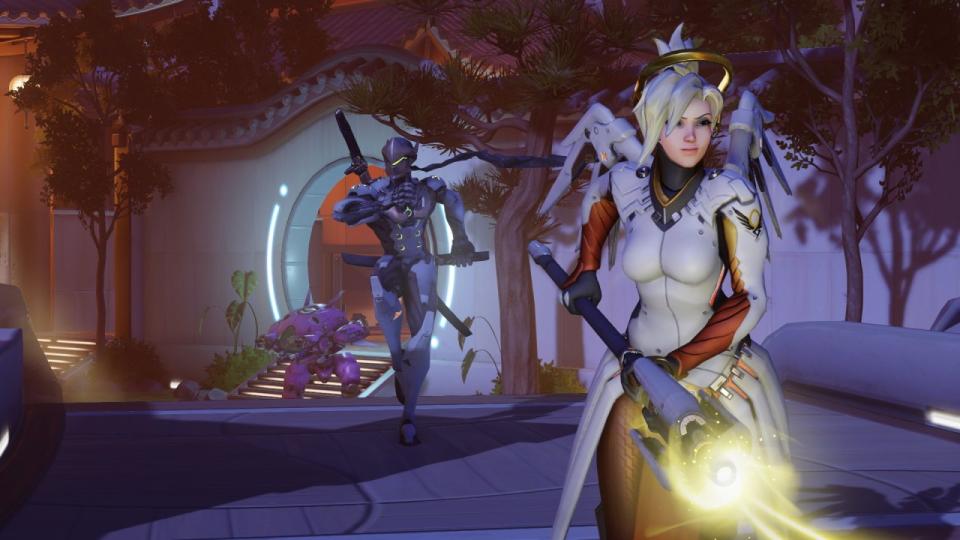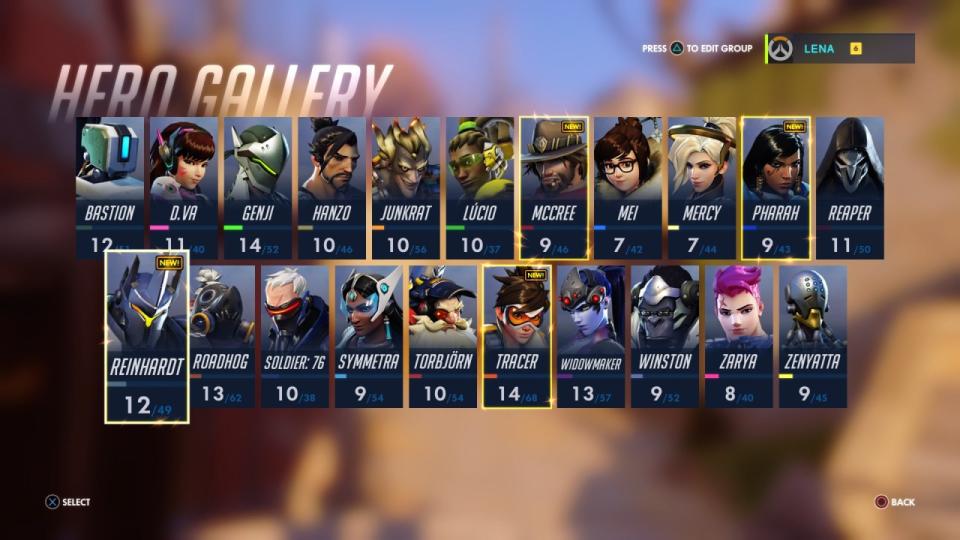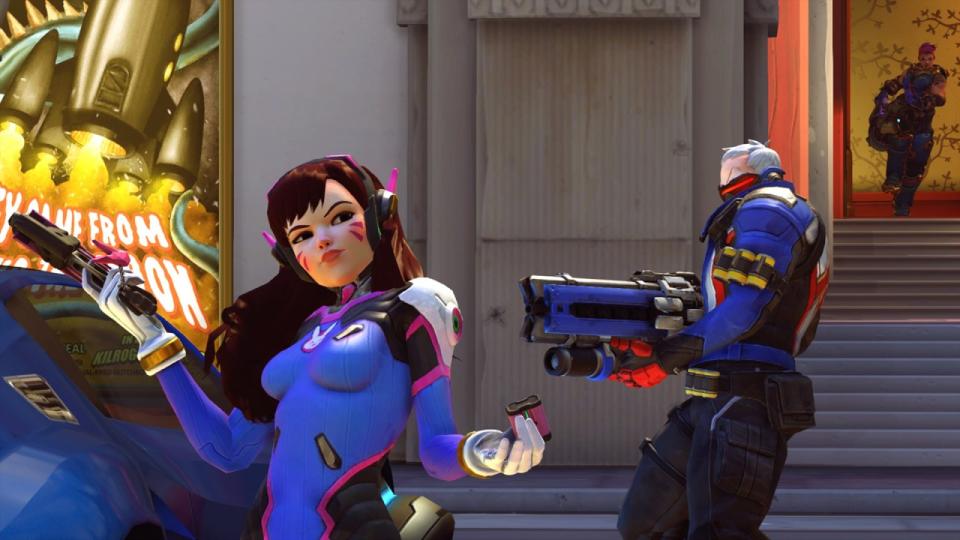An esports guide to Overwatch
Overwatch is officially out on May 24, but unofficially, it’s been out for quite some time. Blizzard held multiple betas, and the esports community was all over them. Before the Overwatch era begins, here’s a look back at how the game changed over its run-up to release, and where the competitive scene stands on Day One.

(Image: Blizzard)
The teams
Blizzard soft-launched Overwatch with an alpha test on November 20th, and those early days were completely dominated by the first iteration of EnVyUs (playing under the name Team Hubris). The most notable tournament from the early beta, the ESL Overwatch Atlantic Invitational, pit the two best teams from NA and EU in a double elimination bracket. The U.S. dominated the competition and saw both representatives from their region, Hubris & Not Enigma, in the grand finals. These two teams traded the title back and forth during the initial play period.
In Europe, Melty Esports Club was the frontrunner, with Fnatic hot on their tails. Many Overwatch players transitioned over from other games; in Fnatic’s case, their entire Battlefield team made the switch. That squad has since left Fnatic and started their own organization, REUNITED, which came into a great deal of success in the second beta phase.
After the first closed beta came to a halt in December, the floodgates re-opened in February with a major patch. Two of the best teams from both regions, Melty and EnVyUs, fell off in terms of results. Taking their places were REUNITED and Cloud9, a squad that originally played as Team “googleme” and found such success in the second playtest that Cloud9 picked them up.
The core of the successful early beta team Not Enigma also transitioned into a sponsorship with Luminosity Gaming in March. And after a slew of roster changes in April, EnVyUs announced that their Overwatch team had disbanded, though the org quickly moved to sign the majority of top European team IDDQD to replace them.
Those four teams — Cloud9, REUNITED, Luminosity, and EnVyUs — have largely dominated Overwatch’s early lifecycle as an esport.
The open beta ended on an incredibly high note May 10 courtesy GosuGamer’s Overkilll league. Featuring 12 group stage matches for both EU and NA, Overkill was ruled by REUNITED, who went 6-0 in Europe, and Cloud9, who ran up the same record in NA. Their final, a grueling best-of-nine between the two titans, was featured on the front page of Twitch as 18,000 concurrent viewers watched Cloud9 win 5-3. As Overwatch goes wide, they’re the team to beat.

(Image: Blizzard)
The format
There are a few different modes in Overwatch, but the competitive scene has gravitated towards Stopwatch.
Both teams take turns attacking and defending. If both teams win as attackers, then whoever finished the game fastest is victorious. If both teams defend successfully, then the winner is determined by who was able to push the payload further. If both teams tie at the same checkpoint, then a one-off tiebreaker Control Point match is typically played as the decider.
It remains to be seen if this is the mode Blizzard will officially endorse for their own competitions, however. There are no multiple hero limits in competitive, and you can swap out your champion as much as you’d like in-game.

(Image: Blizzard)
The meta
When the first wave of Overwatch invites went out, the draft composition was typically very simple: two tanks, two supports, and two damage dealers. There are exactly 230,230 different combinations of characters that are possible in-game, but optimal Overwatch comps are very map dependent.
Most teams built around Pharah in the beginning, coupled typically with McCree and Zenyetta. One of the only counters to a Pharah was a better Pharah, because the damage boosted Widowmaker that had done so well with its covalent Zynetta had been nerfed. Teams started rotating out feeble “anti-air” McCree for Reaper, who provides much more survivability. At the same time, Winston began replacing Zarya in lineups, as Winston’s Shield mitigated Pharah’s damage exceptionally well.
The beginning of the second beta introduced a major change where your ultimate would no longer gain a charge percentage upon death. This led to teams playing less of a wombo combo style and focusing more on individual engagements. Off the bat we saw more triple dps compositions among other much…darker…ideas.
Enter the “God” comp. The widely accepted blueprint consisted of four supports with two DPS heroes; for instance, two Zenyettas to provide damage orb buffs, Symettra for shields and her teleporter, Lucio for his disengage, and then a combination of Genji or Tracer. This produced a makeshift “protect the ___” composition that has appeared in other MOBAs, where supports essentially hide in the shadows and buff the living hell out of an incredibly mobile hero before sending them off into the battlefield to do their bidding. The idea was originally claimed to have been conceived by C9 in practice, but was unveiled and popularized by IDDQD overseas.
It was a potent plan of attack, but it wasn’t long for this world. After three long weeks, Blizzard changed Zenyetta so that his orb was no longer permanent, requiring a hero to remain in his line of sight. They also they nerfed Genji’s burst combo, a series of animation cancels that could near-instantly kill most heroes and reset his dash. On top of all this, they dropped Symettra’s shields from 50 to 25 hp. While there are still variations of the “Double Orb” composition seeing play, after these changes the god comp was effectively dead overnight.
Towards the end of the beta, other comps were being explored. The trend moved towards running double McCree and double Winston. Winton provides a lot of health in the front line, and the double McCree, with his flash and fan-the-hammer ability, was effective at shutting tanky frontlines down.
Interestingly enough, builder heroes such as Torbjorn and Bastion don’t find much success in the competitive meta and rarely see as much play as heroes like Reinhart, Mercy, Lucio, and McCree, who have remained mostly unchanged and acted as staples in standard strategy.

(Image: Blizzard)
The events
Despite investing in huge tournaments for games like Hearthstone and Heroes of the Storm, Blizzard hasn’t said much of anything for their plans concerning Overwatch esports. But there are already third-party tournaments and LANs popping up, with two major ones within days of the game’s official release.
TakeTV’s TaKeOver will technically be the first offline Overwatch tournament. The international LAN, which takes place May 27 - 29, will bring together eight invited teams at TakeTV’s Studios in Krefeld, Germany where they’ll play for modest $5,000 prize pool.
That very same post-launch weekend sees Agents Rising at the Esports Arena in Santa Ana, California.This tournament will feature four teams in a single elimination bracket, playing for their share of $10,000.
Special thanks to KyKy, Talespin, TviQ, IDDQD, Hexagrams, TempoZP, and AskJoshy for their help in this article.
Dylan Walker is on Twitter @dyluux.

